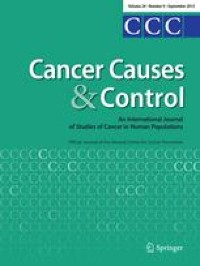Abstract
Purpose
A recent meta-analysis of five case–control studies and one cohort study reported that exposure to glyphosate was associated with increased risk of non-Hodgkin's lymphoma (NHL). The meta-analysis was based on estimates of risk from the included studies at the highest reported exposure level obtained from analyses with the longest lag period. The extent to which the summary estimate depends upon the exposure definitions and assumed latency period is uncertain.
Methods
We carried out sensitivity analyses to determine how the definition of exposure and the choice of latency period affect the summary estimate from meta-analyses of the 6 studies included in the recent meta-analysis. We also conducted a meta-analysis of ever-exposure to glyphosate incorporating the most updated results from the case–control studies.
Results
The summary estimates of risk varied considerably depending on both the assumptions about exposure level and latency. Using the highest reported exposure levels, evidence of an association between glyphosate and NHL was strongest when estimates from analyses in the cohort study with a 20-year lag [RR = 1.41 (95% CI 1.13–1.76)] and a 15-year lag [RR = 1.25 (95% CI 1.01–1.25)] were included. In our meta-analysis of ever-exposure with no lag period, the summary relative risk with updated estimates was 1.05 (95% CI 0.87–1.28).
Conclusion
The results of meta-analyses of glyphosate exposure and NHL risk depend on assumptions made about both exposure level and latency period. Our results for ever-exposure are consistent with those of two recent meta-analyses conducted using somewhat different study inclusion criteria.



No comments:
Post a Comment